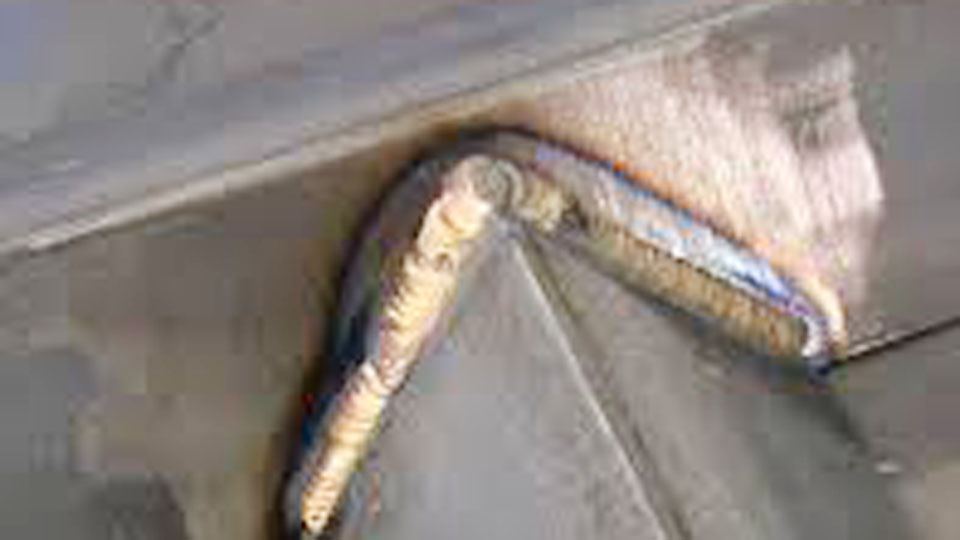TIG welding silicon bronze is a unique process that requires precision and patience. I remember the first time I worked with silicon bronze; it was an entirely different experience compared to welding steel or aluminum.
Silicon bronze has a lower melting point and doesn’t require as much heat, making it a great option for joining dissimilar metals or creating artistic projects. If you’re looking to master the art of TIG welding silicon bronze, I’ll walk you through everything you need to know.

Image by weldingtipsandtricks
Silicon Bronze
Silicon bronze is a copper-based alloy that contains about 96% copper, along with silicon, manganese, and zinc. It’s known for its corrosion resistance, strength, and ability to be welded with a low amount of heat. This alloy is commonly used in marine applications, sculptures, and sheet metal work.
One of the reasons I enjoy working with silicon bronze is that it flows smoothly and produces a visually appealing weld. If you’re not careful with heat control, you can end up burning through the material or causing unnecessary distortion.
Choosing the Right Equipment
To get started with TIG welding silicon bronze, you’ll need the right equipment. Here’s what I recommend:
- TIG Welder – A high-quality AC/DC TIG welder with precise amperage control is essential.
- Electrode – A pure tungsten (green) or 2% ceriated (gray) electrode works well.
- Filler Rod – Use ERCuSi-A silicon bronze filler rods for the best results.
- Shielding Gas – 100% argon gas provides a clean and stable arc.
- Torch and Cup – A standard TIG torch with a #6 or #8 cup size is ideal.
- Protective Gear – Always wear proper safety gear, including gloves, a welding jacket, and an auto-darkening helmet.
Preparing the Metal Surface
Before striking an arc, surface preparation is crucial. Any contamination, oil, or oxidation can lead to weak welds and poor results. Here’s how I prep my metal:
- Clean Thoroughly – Use a stainless steel brush or Scotch-Brite pad to remove oxidation and contaminants.
- Degrease the Surface – Wipe down the metal with acetone or a similar degreaser.
- Fit-Up and Clamping – Ensure your workpieces fit tightly together to minimize gaps.
- Preheat if Needed – If welding thick sections, a light preheat (around 300°F) can help prevent cracking.
Setting Up Your TIG Welder
Proper settings make a big difference in silicon bronze welding. Here’s what I use as a starting point:
| Setting | Recommended Value |
|---|---|
| Amperage | 40-120A (depending on material thickness) |
| Polarity | DCEN (Direct Current Electrode Negative) |
| Gas Flow | 15-20 CFH (Cubic Feet per Hour) |
| Torch Angle | 10-15 degrees leading |
I always start with a lower amperage and adjust as needed. Silicon bronze doesn’t require as much heat as steel, so using too high an amperage can cause warping or burn-through.
Welding Techniques for Silicon Bronze
TIG welding silicon bronze requires a steady hand and proper technique. Here are some key points to keep in mind:
- Maintain a Short Arc Length – A longer arc can lead to excessive oxidation.
- Use a Dabbing Motion – Unlike steel, silicon bronze is best welded using a small dabbing technique.
- Keep Heat Input Low – Avoid overheating to prevent warping and distortion.
- Backstep Welding – If working on thin material, backstepping can help minimize heat buildup.
Common Issues and How to Fix Them
Here are some common problems I’ve encountered while welding silicon bronze and how to fix them:
| Problem | Cause | Solution |
| Porosity | Contaminated surface | Clean thoroughly before welding |
| Cracking | Too much heat input | Lower amperage and use a faster travel speed |
| Warping | High heat on thin material | Use pulse settings or backstep welding |
| Uneven Bead | Poor torch control | Practice steady hand movements |
Applications of TIG Welding Silicon Bronze
Silicon bronze welding is used in various industries. Some of the most common applications include:
- Automotive Industry – Used for sheet metal restoration and repair.
- Marine Industry – Great for corrosion-resistant components.
- Artistic and Decorative Work – Sculptors love silicon bronze for its appearance and easy workability.
- Electrical Components – Found in some electrical grounding and wiring systems.
Conclusion
TIG welding silicon bronze can be a rewarding process once you understand how to control the heat and apply the right techniques. It’s a versatile alloy that offers excellent corrosion resistance and a beautiful weld appearance.
With proper preparation, the right equipment, and a steady hand, you’ll be able to produce high-quality welds that are both strong and visually appealing. If you’re new to welding silicon bronze, take your time, practice on scrap material, and enjoy the process.
FAQs
Can you TIG weld silicon bronze to steel?
Yes, but it requires careful heat control. Use silicon bronze filler and keep heat input low.
What shielding gas is best for TIG welding silicon bronze?
100% argon is the best choice for a clean weld.
Why does silicon bronze weld at a lower temperature?
It has a lower melting point than steel, which helps prevent distortion and burn-through.
Do I need to preheat silicon bronze before welding?
Preheating is only necessary for thick sections to prevent cracking.
Can I use a MIG welder for silicon bronze?
Yes, but it requires a different technique using silicon bronze wire and a spool gun.